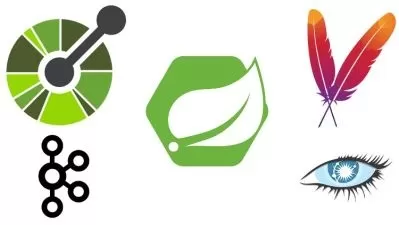About Software DevelopmentLearn More
Software development includes the steps in which programmers create computer programs by using one or more programming languages. These programs are supposed to fulfill personal or corporate goals.
Sort by:
Sorting
The newest
Most visited
Course time
Subtitle
Filtering
Courses
Subtitle

Udemy


Sam Williams
Your First Backend API and Database with NodeJS and AWS 1:20:38
English subtitles
03/26/2024
Books
Frequently asked questions about Software Development
Software development is the process of building, designing, and modifying computer software. Software development includes using programming languages to write the source code for a piece of software and testing, deploying, and continually supporting the software over time. It also includes the process of making modifications and improvements to an existing software program by re-engineering and rewriting source code, fixing bugs, and adding new features. Everything from the initial idea or conception for a software program to the final deployment and ongoing maintenance of the program can fall under software development.
A software developer plans, creates, tests, or maintains software programs. Software developers often work as a team, and each team member may do a combination of these things or specialize in a particular part of the software development process. Their goal is to identify and understand requirements given by a business, end-user, or other entity and develop computer software to successfully meet those requirements. An individual software developer’s role can vary from researching and strategizing the process of creating a new software program to writing the source code to maintain or modify the program after it’s been created. Most software developers need to write code for a portion, if not a majority, of their job duties. They often collaborate with other teams within a business to better understand requirements for the software’s features, feedback on the software’s performance, and identify bugs that need to be fixed.
A software developer needs a combination of technical skills and creative problem-solving skills. Knowledge of coding and programming languages is a basic requirement for this role. Software developers are expected to know at least one programming language and are familiar with programming tools such as text editors, compilers, and integrated development environments (IDEs). A good software developer will also be well-versed in algorithms, data structures, and how databases are organized. A working understanding of common software development processes, including the software development lifecycle (SDL), best practices for source control and version control, agile development, and others, is also needed. It helps to have strong skills in problem-solving, mathematics, data organization, attention to detail, and teamwork.
Computer software is a set of instructions that tells a computer what to do. There are three basic types of software: system software, programming software, and application software (or “apps”). System software defines and controls a computer’s core functions, including the operating system (OS), disk management, and utilities. Programming software refers to programs that help people create and edit code, including text editors, compilers, and linkers. Apps act as tools for end-users. These programs include everything from productivity and documentation tools, security programs, and media players to web applications, social media platforms, and games. Some consider embedded software to be a fourth category, including programs that control and connect Internet of Things (IoT) devices like cars, telecommunication networks, and smart thermostats.
The software development lifecycle (SDLC) is a widely accepted methodology for developing software from beginning to end. The exact steps vary across teams, but they always encompass the following phases: requirements, planning, design, implementation, testing, deployment, and post-deployment. In the first three steps, developers analyze the requirements for the software program, plan how to build a product to meet those requirements, and design the architecture for the code. Once these steps are complete, the implementation step covers writing the actual code. The testing step often begins during implementation, allowing developers to identify and fix issues as they work. Once all the code has been written and tested, the software is released as a completed program in the deployment step. This is followed by some form of post-deployment activities, such as ongoing evaluation and maintenance, to ensure it continues working properly and address any bugs.
While they are often used together, Agile and Lean philosophies stem from slightly different focuses and purposes. Agile software development was created as a process to achieve high-quality end products. Agile values include prioritizing individuals and interactions, functionality, customer collaboration, and flexibility above reliance on specific tools, documentation, contracts, or plans; the goal is to create the best product possible. Lean software development adopts the principles of Lean manufacturing, which focus on making processes faster and more accurate. Lean values include eliminating waste at all stages of development, prioritizing quality, and optimizing workflow to continually improve the development process. Software developers often incorporate both Agile and Lean in their work to build high-quality programs efficiently.


























![React JS Made Easy - Using Next.JS [2024]](https://traininghub.ir/image/course_pic/32541-x225.webp)














